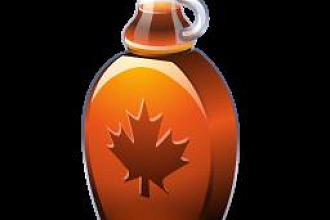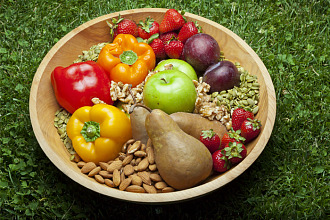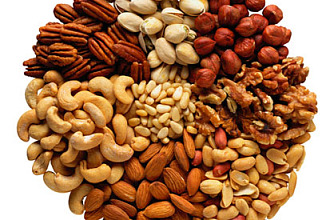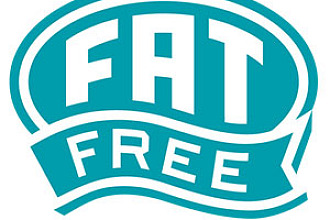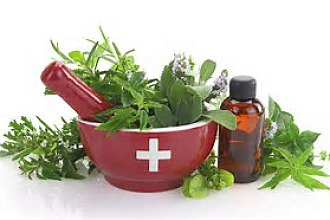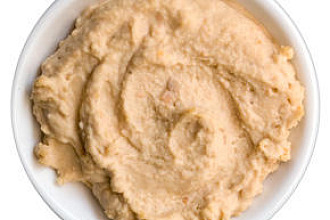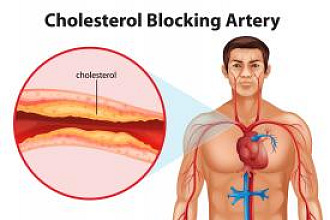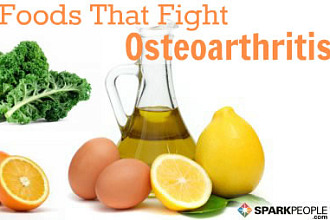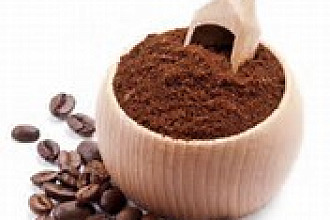Refined Foods
Heart and blood vessel disease, such as angina and hypertension, and metabolic disorders such as diabetes and hypoglycemia, and many other ailments are recognized as sedentary lifestyle diseases in those who consume a rich and unwholesome diet. The diet in technologically advanced countries has an average fat content of 30-50% of the calories consumed. It is also very high in refined carbohydrates. An especially damaging food combination is refined fats and refined sugars. Investigators have found that in poorer countries where the people eat 20% or less of total calories in fat, where the diet consists mainly of unrefined carbohydrates such as whole grains, fruits and vegetables, these diseases are almost never found. The more fat and refined carbohydrates eaten, the more degenerative disease found.
The use of diets high in soluble fibers (oat bran and beans) will lower cholesterol significantly. Insoluble fiber (wheat bran) is not so effective. Extra water, at least two eight-ounce glasses a day, should also be taken with the soluble dietary fiber, as that will increase the effectiveness of the fiber. If gas or flatulence is a problem from the extra fiber, the use of digestive enzymes such as papaya, bromelain, etc. can be very helpful.—American Family Physician. 51:419; 1995.
Cholesterol, Atherosclerosis, and Stress
In addition to the total fat contained in it, animal muscle tissue of all kinds—beef, pork, lamb, poultry, fish, shellfish, etc., and especially organ tissue (liver, brains, kidneys, etc.) and eggs (chicken eggs, fish roe, etc.)—introduce still another harmful substance into our bodies—cholesterol. While some cholesterol is needed by the body, it can produce all it requires. Stress hormones and sex hormones both use cholesterol as a part of their molecules, and those who are under emotional tension will find this to be a cause of elevated blood cholesterol. The body can handle (although not so easily) the amount of cholesterol present in about three ounces of animal protein (meat, fish, etc.) daily. (That would be a small piece about 1 x 1 x 3 inches.) Any more than that gets stored in the blood and tissues. The excess stored cholesterol forms plaques inside the blood vessels, and, in time, these turn into ulcers or abscesses. This condition is known as atherosclerosis. In some countries atherosclerosis is almost unknown and cholesterol levels run 60 to 90, whereas on our high animal food diet our cholesterol levels run 200 to 250 or more. The ideal for an American should probably run no more than around 100 plus the age. The heart attack rate is four times higher if the cholesterol is over 260 than if it is below 200. A mere 10% reduction in cholesterol reduces by 25% the likelihood of a heart attack.
On our usual high-fat refined diet, these plaques begin to form even in very young people, gradually building up over a period of time and narrowing the channels in the blood vessels. This narrowing reduces the amount of blood flow to the tissues. The heart compensates by elevating the blood pressure more and more, eventually producing high blood pressure.
If the coronary vessels that serve the heart become sufficiently clogged by plaques, any circumstance which further reduces the already diminished oxygen supply to the heart muscle will cause the heart to "cry out" in pain—the pain of angina. A slight exertion such as running a short distance, an emotional episode, or even a single big or fatty meal, can bring on an angina attack. In the experiment of one scientific investigator, the angina patients did nothing but drink a glass of dairy cream. Even though they were at complete rest, all of them got angina attacks.
To understand how fat does this, we need to observe what happens after fat is digested. It enters the blood as tiny fat balls called chylomicrons. When these balls stick onto red blood cells, there is blockage of blood flow to the tiniest blood vessels, the capillaries. The red blood cells then clump together in formation resembling rows of coins which have lost much of their efficiency in picking up and transporting oxygen.
It is this process of depriving the body cells of oxygen that causes cholesterol to form the atherosclerotic plaques. The artery walls become much more easily penetrated by fats and cholesterol when the blood that bathes them is deficient in oxygen, thus encouraging the plaques to form. The plaques cause a gradual deterioration in hearing, vision, joint function, digestion, and finally brain function, leading to senility. On a proper diet and lifestyle the plaques will quickly shrink and gradually begin to disappear so that near normal circulation will be restored. By lowering the blood fats by a diet low in fats of all kinds, as well as in refined carbohydrates like sugar, honey, and molasses, which become converted to triglycerides (a common fat in the blood), diabetes can also be corrected. High blood fats bring about a situation in which the insulin from the pancreas is unable to effectively act upon blood sugar.
Cholesterol and Slow Mental Processing
High cholesterol has long been blamed for heart disease and hardening of the arteries. It is now recognized that it is possible that very low cholesterol levels are associated with slow mental processing. Two hundred seventy-nine students were measured in relation to the speed and accuracy of making choices in tasks that were timed. Female subjects with low plasma levels had slower movement times and slower decision times. It may be that some factor associated with cholesterol may make women bolder or less cautious. Additional studies have been planned.—Psychosomatic Medicine. 57:50, January 1995.
Difficulty concentrating and high serum cholesterol levels are two of the symptoms of hypothyroidism. It may be that hypothyroidism is more undiagnosed than we have previously thought. Other symptoms include fatigue, depression, cold extremities, dry skin, fluid retention, hair loss, constipation, infertility, menstrual irregularities, and poor resistance to infection. Improving the thyroid function can help remarkably with high cholesterol when low thyroid is a factor. See our counseling sheets on how to improve the function of the thyroid.
Every member of the family—from the youngest child on, will have better health on this diet. There is much sobering evidence that the average Western diet produces diseased arteries and other problems even in young children. You will also find your food budget goes farther on this diet!
Certain prescription drugs such as Dilantin can cause an increase in serum cholesterol which increases risks of coronary heart disease.—British Medical Journal. 4:85, 1975. Serum cholesterol levels were found to be 6-48% higher during the first three months of treatment with Dilantin, and remained high through the treatment period. The mechanism for this increase is probably through damage to the liver.
Diet to Lower Cholesterol
If you are even ten pounds overweight you have a greater likelihood of getting high cholesterol. The diet on page 3 will help you get weight off. Don't keep any extra weight, as it can nullify an otherwise excellent program in some people. Calculate 100 pounds for your first five feet, and for women five pounds per inch thereafter, six to seven pounds per inch for men, depending on how muscular he is. Example: If you are a woman 5′ 5″ tall, you could weigh as much as 125, but no more unless your cholesterol and triglycerides are on the bottom.
Breakfast eaters have lower blood cholesterols than persons who do not eat breakfast. It was found that children who consistently skipped breakfast had significantly higher blood cholesterol levels. The national average for cholesterol in students ages 9 to 19 is 165! Students who eat breakfast as a routine have cholesterol levels from 140-150. Even this level is higher than ideal. Those who regularly skip breakfast average about 172. The study by Dr. Ken Resnicow was reported in USA Today, 3-18-1991.
Blood Cholesterol Elevated by Protein
Heavy proteins in the diet increase the likelihood of developing high blood cholesterol and hardening of the arteries. Several proteins were studied for their ability to cause these disorders in the blood and arteries. In order of their ability to produce these disorders purified soy protein was at the bottom of the list, next up from the bottom came wheat gluten, then pork, beef, lactalbumin (from milk), skim milk, and whole egg (the worst).
The high cholesterol level caused by saturated fats can also be caused by trans-fats. These trans-fats are formed when manufacturers process oils in any way, as to hydrogenate vegetable oils. The product can be labeled without cholesterol but still stimulate the liver to produce cholesterol in excess. Check your commercial foods such as cookies, crackers, canned soups, dry goods, and even cereals for hydrogenated fats. Fast foods such as French fries, onion rings, fried chicken, doughnuts, and so forth, along with vegetable shortening and margarine also contain trans-fats. Human breast milk is often a very rich source of trans-fats because of the mother's use of trans-fats in her foods.—New England Journal of Medicine. 341:1396, 1999.
Almost 120,000 doctors, dentists, and nurses completed a questionnaire every 24 months over a period lasting eight to fourteen years. Harvard University conducted the study and found that, for diabetics in the study, eating an egg a day doubled the risk for coronary heart disease and stroke. We recommend for those who are genetically high in cholesterol that all animal products be removed from the diet. Even animal protein has a deleterious effect on blood cholesterol.—Journal of the American Medical Association. 281:1387, 1999.
Both iron and copper have been found in trace amounts in atherosclerotic plaques. It may be that the high iron content of certain animal products, or supplemental iron accounts for some portion of hardening of the arteries. Many metals are becoming linked with disease such as the link suspected between aluminum and Alzheimer's disease, and the link between iron and Parkinson's disease. High iron levels have also been linked to bowel cancer and fatal coronary heart disease.—Dr. Michael Selley of Australian National University's Curtin School of Medical Research in Canberra, December 1992. It is not advisable to take supplements containing iron unless your hemoglobin is under ten grams or your serum iron is under 20.
One meat meal per month keeps the liver turned up to produce an increased quantity of cholesterol. The person who wishes to reduce their cholesterol must be off all animal products. The release of insulin is controlled to a large degree by the type of protein one eats. With plant protein the release of insulin goes down; but with animal protein the release of insulin goes up. Of course, this reflects the release of glucose as it is on the same control system as insulin. The level of insulin in the blood, just as the cholesterol level, is a predictor for cardiovascular disease, hypertension, diabetes, overweight, and cancer, independent of all other factors.
Select a Variety of Foods from This List (emphasizing those at the beginning of the list):
FRUIT: All fruit, including olives and avocados
VEGETABLES: All vegetables, greens, and herbs
LEGUMES: All peas, beans, lentils, and garbanzos
TUBERS: Yams, potatoes, beets, carrots, radishes, etc.
CEREALS: All whole grains
NUTS and SEEDS: Walnuts, almonds, some peanuts and cashews, pecans, all seeds
Avoid These Foods:
Sugar, syrup, honey, molasses
Oil, margarine, shortening, peanut butter, other nut butters
No animal products, including animal protein
Alcohol and caffeinated beverages
Strong spices and salt
Basic Daily Needs on a Therapeutic Diet:
FRUIT: Two or more servings
Note that the whole fruit has 6 to 10 times as much fiber as the juice. Fiber attaches to cholesterol and takes it out of the body.
VEGETABLES: Two or more servings of green or yellow vegetables
LEGUMES: One serving of beans, peas, garbanzos, or lentils
CEREAL: Two or more servings of whole grains, varied from time to time
TUBERS: Use as needed in place of vegetables or grains, or to increase the total number of calories if needed.
NUTS AND SEEDS: One ounce of any, roughly two tablespoons
Garlic and Onions
Even as far back as 1962, and especially more recently, garlic has been shown to inhibit the synthesis of lipids in the liver and to increase the utilization of serum insulin, benefiting both heart disease and diabetes. —Medical Science Research. 20:729-731, 1962. In a study on the effects of garlic to lower cholesterol and triglycerides, 20 healthy volunteers were fed garlic oil (0.25/mg/kg. per day in two divided doses for six months). —The Lawrence Review of Natural Products. St. Louis, MO., April 1994. The treatment significantly lowered average cholesterol and triglyceride levels while raising levels of high-density lipoprotein cholesterol (HDL, the good cholesterol).
Sixty-two patients with coronary artery disease and elevated cholesterol levels were assigned to two subgroups: one group was fed garlic for ten months and the second group served as the untreated controls. Garlic decreased the cholesterol, triglyceride, and low-density lipoprotein cholesterol, while increasing the HDL. The anti-coagulant properties, cholesterol-lowering properties, blood pressure-reducing properties, and most others are not lost when cooking garlic, although they may be slightly reduced.
A study conducted by Tulane University revealed that total cholesterol levels in those taking garlic tablets dropped by 6% and LDL cholesterol was reduced by 11%. Researchers at the University of Kansas discovered that garlic tablets reduced the susceptibility of LDL oxidation by 34% compared to the placebo group.
One way to raise the HDL cholesterol is with the juice of one white or yellow onion a day. The HDL cholesterol will rise by 30% in three to four months. Onions are also remedial in stimulating a weak heart, but the benefit is in the bite. Mild onions lack the HDL-elevating effect.
Soybeans
Soybeans contain isoflavones which have a very marked influence on reducing high blood cholesterol, yet it does not reduce HDL.—Health Letter on Current Research on Nutrition and Preventive Medicine. 9(1):9, 1999. One serving daily of one-half cup of soybeans reduces LDL cholesterol an average of 10% in about four months.
Soybeans cause a reduction in cholesterol. Soybeans contain isoflavones which have a very marked influence on reducing high blood cholesterol, yet it does not reduce HDL.—Health Letter on Current Research on Nutrition and Preventive Medicine. 9(1):9, 1999. One serving daily of one-half cup of soybeans reduces LDL cholesterol an average of 10% in about four months.
Nuts and Flaxseed
Walnuts have a more favorable ratio of total to saturated fatty acids than any other food. A couple of tablespoons of walnuts taken daily can be an important factor in controlling cholesterol. The total cholesterol to HDL ratio considered by many to be the most accurate measure of heart attack risk dropped from 4.0 to 3.7 for 31,000 Seventh-day Adventists taking nuts at least five times a week, and they had half the risk of fatal heart attacks of those who had nuts less than once a week. Even in as short a time as two months the difference can be seen. Volunteers took a diet containing 20% of calories from walnuts, as compared to a diet entirely nut free: the no-nuts volunteers had a 6% reduction in cholesterol, and an additional 12% when they switched to the walnut diet for two months. Walnuts contain omega-3 fatty acids which have a cholesterol lowering effect.— "Walnuts Lower Lipids," The New England Journal of Medicine. July 1993.
Flaxseeds have a similar fat content to walnuts, and often can be purchased at a fraction of the cost of walnuts, and are just as effective (but not as tasty).
Herbs
Cholesterol can be helped by a number of herbs: ginger root, hawthorn berry, myrrh, psyllium, and turmeric. A tea made from one teaspoon of powdered myrrh steeped for ten minutes in boiling water is reported to bring cholesterol down. Use two cups per day. Another tea can be made from one tablespoon of powdered hawthorn berries, with or without one tablespoon of powdered turmeric, and/or one tablespoon of powdered gingerroot boiled gently in one quart of water for 20 minutes. Strain and drink the entire quantity in one day. Psyllium seed, one to three teaspoons stirred into a glass of water two or three times daily, has a cholesterol lowering effect and also helps prevent cancer of the colon. The cost of these treatments is one-tenth that of cholesterol lowering drugs, and yet just as effective, or more than the drugs, without any of the serious side effects which can be seen with the drugs.—FDA Bulletin. #92-1182. Milk thistle can be helpful to bring cholesterol down. Take the standard dosage.
Certain Fruits
Prunes help reduce cholesterol. A University of Minnesota study found that eating twelve prunes a day (about three ounces) helped reduce blood cholesterol levels in 41 men with elevated levels of LDL. Three ounces of prunes contain 239 calories, 7 grams of fiber, and 745 mg. of potassium—more than a banana. Prunes are high in iron and are a good source of beta carotene. Prune paste can replace high-fat shortening in a variety of baked goods, including brownies and bran muffins. Prune paste is made from pitted prunes, vanilla and water. You can make your own by blending one cup of pitted prunes with six tablespoons of water and two teaspoons of vanilla. It can be kept in the refrigerator for several days. When substituted for shortening in baked goods, prune paste reduces the fat in the recipe by at least 75%.—Prodigy(R), Interactive Personal Service. 10/16/91.
A chemical has been found in purple grapes and purple grape juice, resveratrol, which lowers cholesterol in rats. It is also present in raisins. A five-ounce glass of grape juice is sufficient, once or twice daily.
Women who ate enough avocados to comprise around 30% of the calories in the diet had a significant drop of 10% in both total and LDL cholesterol, with no change in HDL.
Citrus fruits and juices given to rabbits caused a reduction in LDL cholesterol. In the rabbits, drinking water with either orange juice or grapefruit juice reduced LDL cholesterol by 43% and 32% respectively.–Nutrition Research. 20:121, 2000.
Try eating a grapefruit twice a day which has been peeled, de-seeded, and blended in a blender. Continue this practice for as long as the cholesterol is elevated. Reports show that pectin in grapefruit can reduce cholesterol by 7-20%, much better than drugs!—Science News. 7-25-87, p. 63. Cholesterol-lowering drugs work by poisoning the liver's ability to make cholesterol. It is this feature that causes the liver cancer or the hepatitis which have been reported due to Mevacor or Pravachol; further, about 15% is the expected drop in cholesterol, very modest. Not worth taking its risks.—Modern Medicine. 60(6):70, 92.
An Ancient Grain
Use amaranth, the ancient Aztec grain which was lost for many centuries, but has recently been re-found. It contains a form of vitamin E and is able to reduce cholesterol substantially. It can be used as a breakfast cereal or to make vegetarian roasts. The flour can be used in waffles.
Nutrient Supplements
Chromium picolinate, 400 milligrams daily, has been shown to be quite effective in the treatment of high cholesterol and triglycerides. It also decreases high insulin levels in insulin resistant persons.—Health Letter on Current Research on Nutrition and Preventive Medicine. 9(1):16, January 1999. The use of diets high in soluble fibers (oat bran and beans) will lower cholesterol significantly. Insoluble fiber (wheat bran) is not so effective. Extra water, at least two eight-ounce glasses a day, should also be taken with the soluble dietary fiber, as that will increase the effectiveness of the fiber. If gas or flatulence is a problem from the extra fiber, the use of digestive enzymes such as papaya, bromelain, etc. can be very helpful.— American Family Physician. 51:419; 1995.
Both iron and copper have been found in trace amounts in atherosclerotic plaques. It may be that the high iron content of certain animal products accounts for some portion of hardening of the arteries. Many metals are becoming linked with disease such as the link suspected between aluminum and Alzheimer's disease, and the link between iron and Parkinson's disease. High iron levels have also been linked to bowel cancer, and fatal coronary heart disease.—Dr. Michael Selley of Australian National Universities Curtin School of Medical Research in Canberra, December 1992. It is not advisable to take supplements containing iron unless your hemoglobin is under ten grams or your serum iron is under 20.
Inositol in a 500 milligram supplement is good to bring cholesterol down. It is best taken with choline. It is also helpful as a stress neutralizer and to bring the blood pressure down.
Drugs and Cholesterol
Certain prescription drugs such as Dilantin can cause an increase in serum cholesterol which increases risks of coronary heart disease.—British Medical Journal. 4:85, 1975. Serum cholesterol levels were found to be 6-48% higher during the first three months of treatment with Dilantin, and remained high through the treatment period. The mechanism for this increase is probably through damage to the liver.
Charcoal
Activated charcoal has been found to lower the concentration of total lipids, cholesterol, and triglycerides in the blood serum, liver, heart, and brain. A study reported by the British journal, Lancet, found that patients with high blood cholesterol levels were able to reduce total cholesterol 25%. About the best hoped for with drugs is 15%. Not only that, but while LDL was lowered as much as 41%, HDL/LDL cholesterol ratio was doubled! The patients took the equivalent of roughly one quarter ounce (approximately one tablespoon) of activated charcoal three or four times daily for six to eight months. It should be taken upon arising, mid-morning, mid-afternoon, and at bedtime. It often takes quite a while before the laboratory will show results as the charcoal also tends to draw cholesterol out of the tissues which keeps the blood cholesterol higher than it would otherwise be. Another study conducted by the National Institute of Public Health in Finland suggested that activated charcoal was as effective in reducing high cholesterol levels as the drug Lovastatin.
Charcoal should not be taken near mealtime as food interferes with its best action. It will take up any kind of pharmaceutical type of medication as it perceives medication as being poisonous. Since it will adhere to most poisons and inactivate them, it is necessary to take charcoal at least two hours from the time medication is taken, and even longer is desirable. For example: If you take blood pressure or epilepsy medication in the morning, take the charcoal in the evening. Charcoal therapy is certainly considerably less expensive, while possessing none of the dangerous side effects of drugs. Our own experience has been that charcoal is a valuable part of a total cholesterol reducing program, but that long-term lifestyle changes must be maintained to permanently reduce high cholesterol.
A group of 60 patients ranging in ages from 60 to 74 were divided into two groups. Forty were given activated charcoal for their high cholesterol, and 20 patients were treated with placebo. The course of treatment lasted for four weeks. There was a 20% reduction in total cholesterol, 27% reduction in triglycerides, 20% reduction of apolipoprotein A, and Apo B dropped by 32%. There were positive changes in the circulation, in the clinical status of patients in 60% of cases, and exercise tolerance improved in 12% of the patients. At the same time the control patients did not present any noticeable changes.—Klin-Med (Mosk). 69(6):51-3; June 1991.
Melatonin
The pineal gland and its melatonin secretion is associated with the control of levels of cholesterol. It may be that very high and difficult cholesterol levels which are not brought down by ordinary means might respond to a trial of sunbaths in the daytime, along with an early bedtime in a dark room, or, if all else fails, melatonin administration.—International Journal of Neuroscience. 76:81;1994.
Exercise
Probably the single most widely beneficial thing, having great effectiveness in bringing the cholesterol down, is exercise. Begin your program today. Start with what you can easily do and build up both the length of time and the intensity of the exercise as your level of physical conditioning improves.
Exercise neutralizes tension. Face squarely those things that trouble you and deal with each one dispassionately, patiently, and kindly.
Vital Capacity
This is the amount of air blown out after a full inspiration. The more air we can take in, the more oxygen in the blood, and the less likely we are to damage our blood vessels to start the process of atherosclerosis. Smoking and a sedentary lifestyle decrease the vital capacity, whereas exercise increases vital capacity.
Triglycerides
The ideal for triglycerides is surely below 140, and probably below 100 is safer. Many people can achieve an enviable triglyceride level around the same as their age. The heart attack rate is two times higher if the triglyceride level is above 250 as compared to below 170. Ninety percent of overweight people have increased triglycerides. Other causes of increased triglycerides are alcohol, sugar, the type of fats in dairy products and refined carbohydrates such as white bread, white flour products, white pastries, white starch. Even large quantities of fruit juices or very sweet or dried fruits (dates, raisins, and figs) may increase triglycerides.
Summary of Factors in Understanding High Blood Cholesterol
Dietary Causes
Presence of:
Meat, milk, eggs, cheese
High fat
Sugar, refined foods
Salt
Coffee, tea, colas, chocolate
Alcohol
Lack of:
Vitamin C
Vitamin E
Vitamin B12
Fiber (especially whole grains)
Fruits and Vegetables (especially legumes)
General Factors in High Blood Cholesterol
Smoking
Blood pressure elevation
Poor posture
Tension, noise, TV
Low vital capacitys
Unstructured lifestyle
Lack of exercise
Overweight
Irregular schedule
Overwork
Underactive thyroid
For more information contact:
Uchee Pines Lifestyle Center
30 Uchee Pines Road #75
Seale, Alabama 36875
Tel. 334-855-4764
www.ucheepines.org
Originally found here









